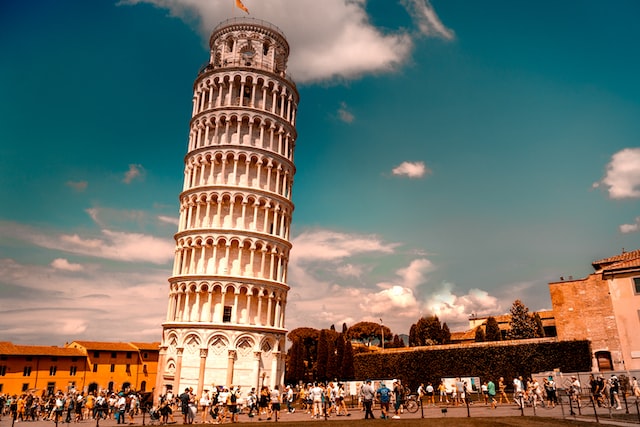
As regulation, legislation and attitudes towards health and safety in the workplace improve, construction workers are safer than ever. Despite an increased awareness of hazards and good health and safety practices on site, some buildings scream ‘danger!’ from the design stage. Whether it’s due to poor planning, unexpected hiccups during the construction process or gravity-defying design, many of the most interesting buildings in the world are those which appear unsafe. If you’re a fan of extreme architecture and you’re seeking out designs that defy the laws of physics, consider checking out these famously precarious structures:
Astra Tower, Germany: As one of the most iconic brutalist/modernist buildings in the world, Hamburg’s Astra Tower was a unique, top-heavy structure that served as a great example of precarious architecture. While the building may have looked like a magnet for accidents and personal injury claims due to its unusual dimensions, it was in fact a safe and stable structure. Located right in the heart of the city’s St Pauli neighbourhood and looking over the red-light district, the original Astra Tower was finished in 1971 and used as a base for the Astra brewery. This physics-defying concrete oddity was eventually demolished and replaced with a more modern and conventional glass-fronted design, the New Astra Tower. The initial Astra Tower was dismantled a few years ago in spite of earlier intentions to renovate the structure. With an all-glass front on the fourth level, the replacement structure, also known as the Astra Tower, nods to the previous structure but lacks its brewery-like sense of defying gravity.
Capital Gate, UAE: Resembling a mind-blowing mashup between a tidal wave, a cliff face and a skateboard ramp, Abu Dhabi’s Capital Gate building has to be seen to be believed. Renowned as the world’s farthest leaning manmade tower by the Guinness World Record team, this 35-storey glass monolith leans 18 degrees westward, with the highest 17 floors sitting on an overhang that would make most rock climbers feel dizzy. Completed relatively quickly between 2007 and 2011, this architectural wonder has been labelled as The Leaning Tower of Abu Dhabi and is one of the most visited buildings in the United Arab Emirates. The foundation of the building is made up of 490 pilings that were dug 30 metres (98 feet) below the surface. Due to the building’s inclination, the deep pilings offer stability against severe winds, gravitational force, and seismic stresses. 287 of the 490 pilings have a diameter of 1 metre (3 ft 3 in) and are between 20 and 30 metres (66 and 98 feet) deep, while 203 have a diameter of 60 centimetres (24 in) and are 20 metres (66 feet) deep. A foundation made of highly reinforced concrete that is nearly 2 metres (6.6 feet) deep caps all 490 piles. Some of the piles were only originally crushed throughout the building process to support the structure’s lower stories. They are now tense due to the added stress caused by the overhang that has been applied.
Pisa tower, Italy: Italy’s famous Leaning Tower of Pisa is amongst the most well-known ‘precarious’ buildings in the world. During its construction in the 12th century, the tower began to lean to one side as a result of building on soft ground – rather than abandon the project, the builders completed the job and by 1990, the tower’s tilt had reached a whopping 5.5 degrees! Between 1993 and 2001, the structure was finally strengthened, and the tilt was reduced to 3.97% degrees – in the 20 years since, the Leaning Tower of Pisa has naturally straightened by 1.6 inches, growing taller! These days, this architectural oddity is one of the most visited attractions in Italy and for good reason. The Leaning Tower of Pisa’s architect’s identity has been the subject of debate. For a long time, the design was credited to Guglielmo and Bonanno Pisano, a well-known native artist of Pisa who worked in the 12th century and is most known for his bronze casting, which may be seen in the Pisa Duomo. In 1185, Pisano travelled to Monreale, Sicily, from Pisa, only to return and pass away there. A cast carrying his name was found in 1820 at the base of the tower, but it’s possible that this has anything to do with the 1595-destroyed bronze door on the cathedral’s façade. Due to the date of construction and similarity to other Diotisalvi works, a 2001 study appears to support the hypothesis that Diotisalvi was the original architect.





